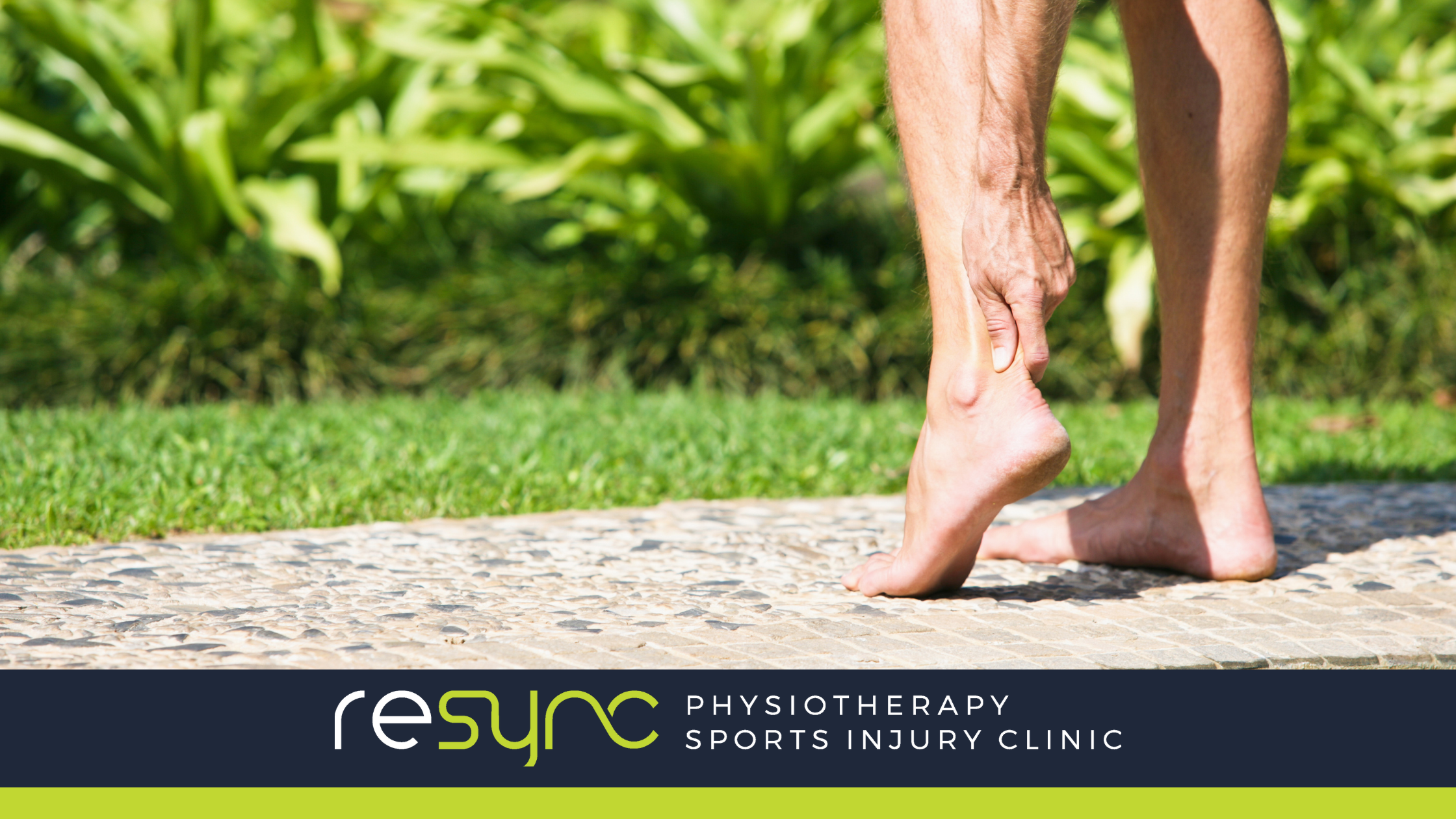
How to Manage Achilles Tendon Injuries in Runners
Achilles Tendon structure
The Achilles tendon is located between our calf muscles and the heel bone.
It is a strong fibrous cord that should act like a spring when we walk and dramatically impacts how we run.
Achilles tendon injuries occur when we overstretch the tendon, where it can partially tear or completely tear (rupture). For this blog, we will mainly focus on chronic injury or partial tear of the tendon.
Achilles tendon injuries result in pain, swelling and impaired function. You may notice that your pain, tenderness and swelling is in the mid portion of the Achilles tendon or at the insertion point at the back of the heel bone.
A tendon injury (tendinopathy) usually occurs due to excessive stresses on the tendon over time. The tendon is a strong and resilient structure. Still, when we frequently place too much load through the tendon, it eventually results in micro-tears within the tendon, pain, swelling, and the tendon becomes injured
Achilles Tendon Injuries in Runners
This typically happens during running training due to a poor training plan that does not gradually increase their mileage along with poor recovery between sessions, i.e. overtraining.
In the clinic, we usually see Achilles tendon injuries present in long and middle-distance runners and typically in people between 35 – 60 years of age. This is due to the excessive stress these runners place on the tendon without a definitive plan for maintaining elastic strength in the tendon itself.
We know that the strength and quality of our muscles and tendons reduce as we get older, so it’s essential to maintain this through training other than running.
Typically you will notice a development of Achilles pain and stiffness over time, especially in the morning. The pain can subside as you warm up for running but typically worsens after training and the next day.
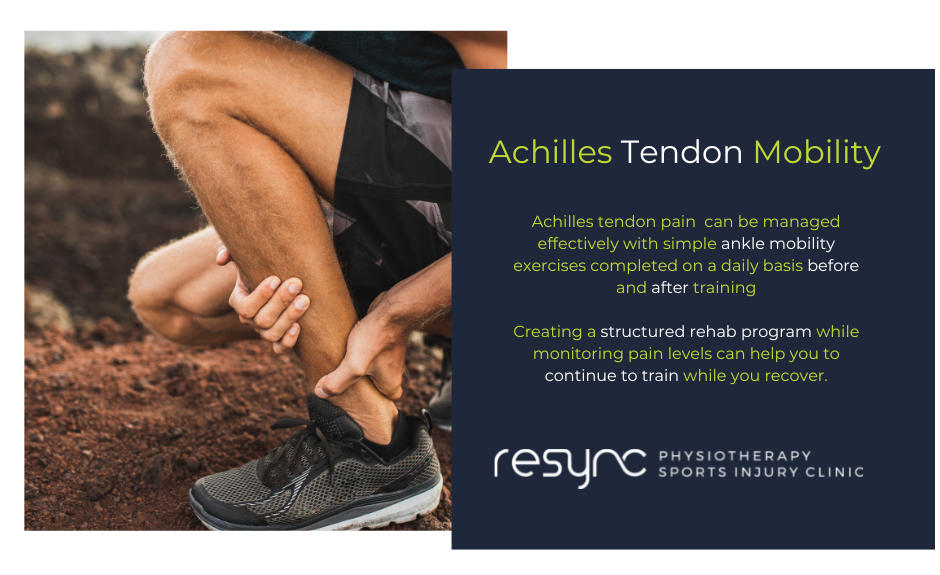
Achilles Tendon Rupture- How common are they?
Achilles tendon ruptures occur in approximately 18 out of 100,000 people, of which the recovery time can range from 9- 12 months, depending on the course of treatment.
Achilles tendon ruptures can be treated conservatively or surgically. Recent studies have shown there to be little difference in long-term outcomes between both interventions. Surgical options do have a lower re-rupture rate but do carry the added complications associated with any surgical procedure.
There are many factors associated with the development of achilles tendon injury in runners.
Internal factors
- Poor ankle range of motion places excessive stress on the tendon leading to flare-ups and injury.
- Tight calf muscles pull on the tendon, causing it to tighten up, and we lose the ability for our ankle to go through the full range as we run.
- An increase in body mass (BMI) places more stress on the Achilles tendon if we haven’t also increased our relative strength.
- Flat feet and poor foot muscle strength
- A lack of strength in the muscle up the kinetic chain. We need solid hips and quadricep muscles to absorb the forces as we run. If they don’t, then we place extra stress on the calf and Achilles complex to absorb these forces. Over time this leads to overload and injury.
- Poor running biomechanics
External factors
- Sitting too much during the day without regular stretching can affect your Achilles tendon’s ability to lengthen.
- Returning to lots of training too soon after a layoff from another injury reduces your Achilles tendon’s ability to recover between sessions.
- Poor footwear alters the mechanics of your Achilles tendon.
- Sudden increases in your running intensity and /or distance can cause Achilles tendonitis.
Achilles Tendon Injury management
Manage your Running Activity
Managing your training and activity is the best way to prevent Achilles tendon injury in runners.
We are most likely overloading the tendon if we run seven days a week with little or no recovery or strength training.
Then the tendon cannot recover between sessions, so it begins to develop microtears as it’s overloaded. Some people may go for an extra long run on the weekend that the body isn’t prepared for, and then they wake with pain and stiffness in the Achilles the following day.
So the cycle begins where on the next run, the Achilles feels stiff until it warms up and feels OK, only to worsen after each subsequent run.
Sound like you? If yes, you most likely need to reduce your running load, recover better and develop a plan to increase strength in the Achilles and calf.
Allow your tendon to heal by stopping or significantly reducing activities that cause aggravation and pain in the Achilles tendon, such as running or jumping.
- Do activities such as swimming or cycling that do not strain the tendon.
- Avoid hills when walking and choose smoother flat surfaces you walk on.
- Gradually increase the amount of activity you do. Consult your physiotherapist to create a treatment plan. This will reduce your pain and help build strength back in the tendon. Finally, they can help plan your running and recovery sessions so you don’t repeat the same mistakes in your training.
- Check out our Achilles Tendon Playlist on Youtube
Manage your Achilles Tendon Injury:
Heel Raise:
A heel raise is a cheap way of reducing the load on the Achilles tendon in the early stage of rehabilitation with no side effects. It helps to lift the heel, which shortens the muscle and tendon. This will lessen the pain response at the aggravated Achilles tendon.
Ice:
Ice creates pain and swelling, relieving the effect on the painful tendon. In addition, it reduces inflammation in the early stages and promotes the healing of the tendon. Apply ice to the tendon for 15 mins, 2 to 3 times daily. Use an ice pack wrapped in a cloth. Do not apply ice directly to the skin.
Painkillers-
A simple non-steroidal anti-inflammatory will reduce pain and inflammation in the early stage after the Achilles tendon has flared up. (consult your doctor before taking painkillers).
Calf Stretching:
Tight calf muscles can cause issues up and down the kinetic chain. Likewise, low tension causes problems in Achilles.
Soft tissue massage:
Massage is beneficial for Achilles tendon issues. While we don’t want to massage the tendon directly, we can ease the tension in the calf muscle with deep tissue massage to accelerate healing.
Exercises for calf muscles
- Isometric single leg heel raise
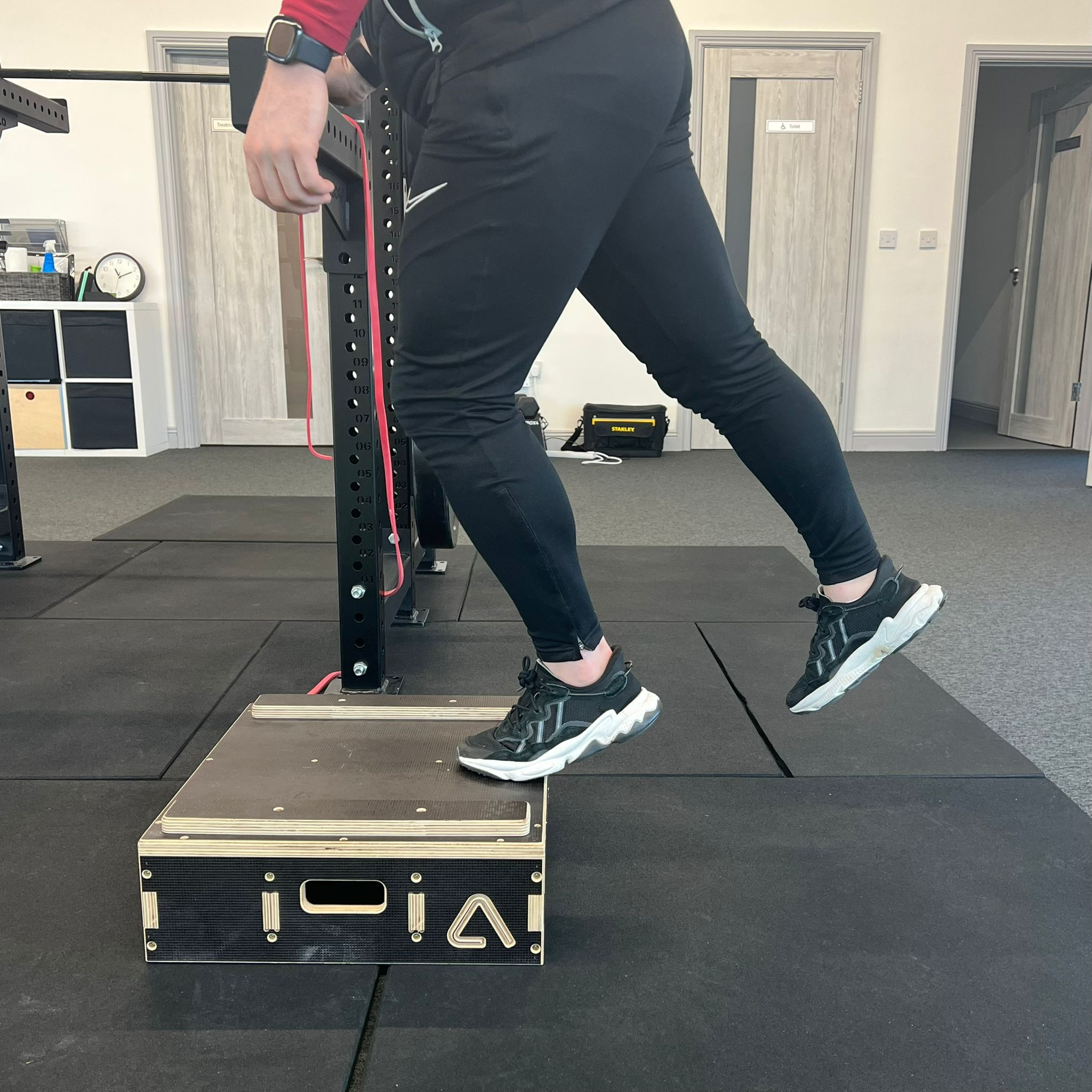
- Calf muscles stretch
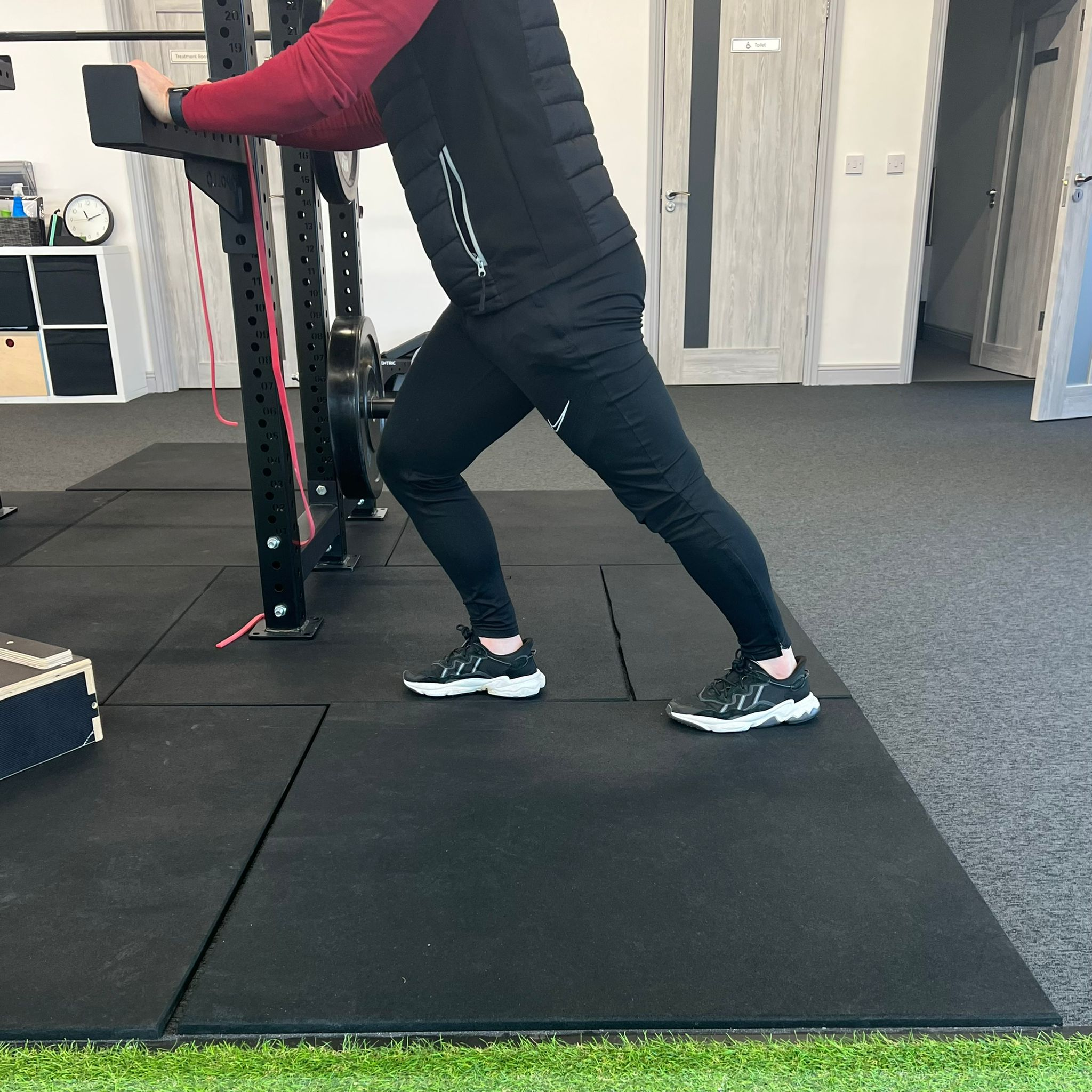
- Soleus strengthening
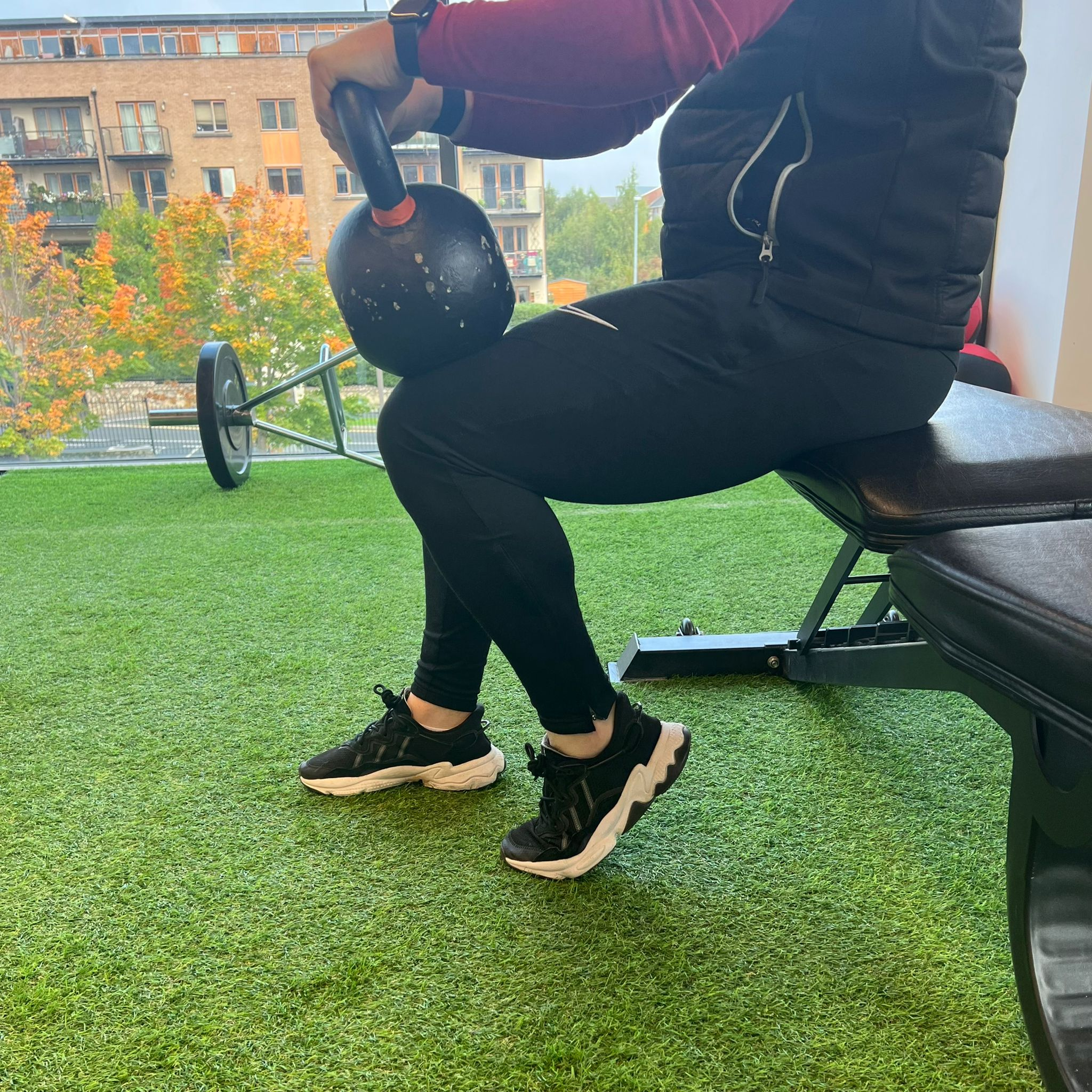
- Eccentric quads
When to see a Physio for Achilles tendon injuries?
If you have tried stretching and resting the tendon but still haven’t fully recovered, then you need to see your physio. They will need to assess to see what contributing factors are affecting the tendon injury and why it’s not healing and start a plan for full resolution.
You may have rested the Achilles and tried some simple stretches. Unfortunately, this tends not to resolve the problem entirely.
You may think that Achilles feels OK walking, but running is different.
Essentially running is jumping from one foot to another. If you continue running when your Achilles tendon is injured, your tendon will lose its elasticity. Loss of elasticity results in further tendon damage and fraying of tendon fibres.
How your physio will help your Achilles tendon injury
- Shockwave therapy
- Pain reduction – Ice & Anti Inflammatories
- Soft tissue treatment.
- Strengthening and Stretching.
- Addressing the Intrinsic & Extrinsic factors.
- Giving you a progressive rehab plan
Book our Achilles Tendon Clinic
Treatment Options for Achilles
Shockwave Therapy Treatment for Achilles
Shockwave therapy is a method where an acoustic wave is projected into the affected tendon to reduce painful inflammatory markers in the tendon. This treatment usually takes 4-8 treatments over 4-6 weeks, depending on the severity of the injury. Shockwave therapy is then combined with a progressive strengthening program to yield the best results.
Strengthening for Achilles tendon Injuries
Strengthening has become the gold-standard treatment for Achilles tendon injuries. Most foot and ankle injuries can be resolved with a targeted strengthening program. Focus on strengthening the tissue around the heel bone ( where the Achilles tendon attaches) and into the gastroc and soleus muscles to help increase tendon stiffness. Tendon stiffness is what gives the tendon its elastic properties. Its elastic properties are lost when fluid or inflammation is in the tendon due to overtraining. Strengthening exercises can take place over 8-12 weeks. Improvement in pain is gradual over this time frame as damage to the tendon begins to heal.
This blog was written by Diarmuid Hegarty – Clinical Specialist in Musculoskeletal Physiotherapy.
If you would like to book an appointment with Diarmuid, please do so by the link below



